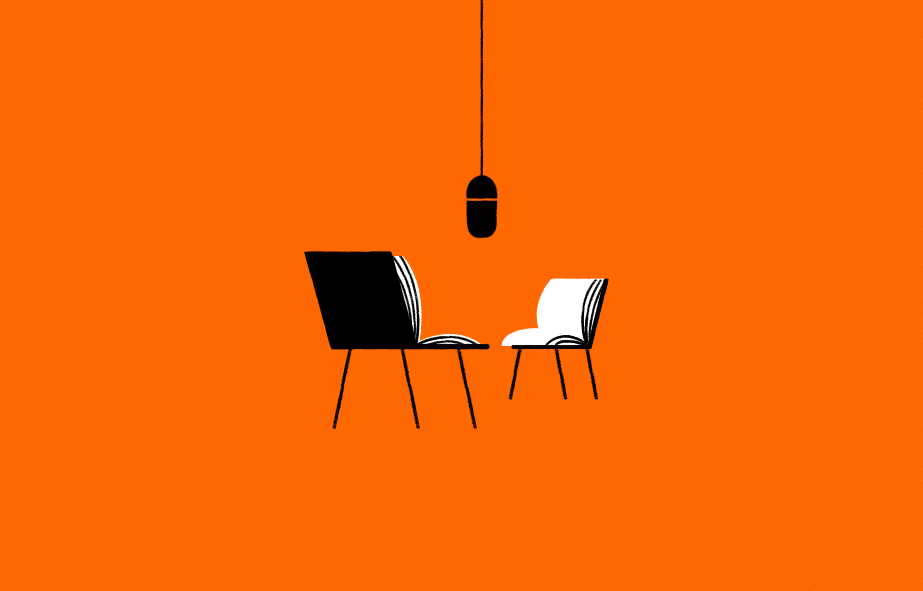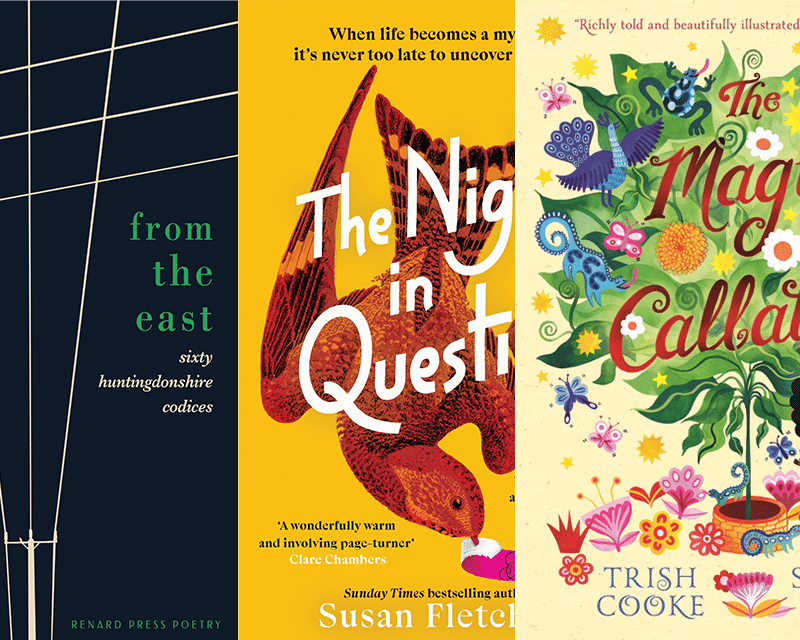- Collected
- Article
How I Fell In Love With My House In Lockdown
Taking a Fresh Look at a Familiar Space

- 14 September, 2020
- Penny Hancock
A few weeks into lockdown a strange phenomenon occurs. A blackbird appears to be singing its little heart out in our tiny en-suite shower room. The full-throated song is so clear that for a second I wonder if someone’s playing a recording of a blackbird’s song at full volume.
It takes me a while to understand two things. First, the traffic on the nearby A road that usually keeps up a background rumble has fallen silent, allowing the birds their own stage. Second, the skylight under the eaves is open, acting as a microphone to the bird on the roof, piping his song into the tiled wet room which in turn acts as an echo chamber.
This is one of the many characteristics of our house I was never aware of before lockdown. Although, pre-covid, I already worked from home part of the time, I always made it a rule to work in the library or a café rather than spend the whole day alone. I actively avoided my house in the day, with its thick, two-hundred-year-old walls made of a mud and straw combination that kept the cold in in winter and the heat in in summer: ‘walls so thick they kept a damp chill inside them whatever the season’, as Laurie Lee said of his house in Cider with Rosie. I found it dark, the ceilings too low, the location too provincial.
Our mid-terraced cottage was never meant to be a ‘forever’ home. It only had two bedrooms when we bought it, and just one door at the back of the house onto the garden, no door on the road side. The path to the door was shared. It was in a part of the country neither of us come from. We thought of it as a stopgap when we needed a home for our young family and, until recently, I was still always on the look out for our next move. But since the beginning of the Covid pandemic, when the house became our refuge, it has revealed its personality to me, demurely, as if offering up its most intimate secrets. I have come to appreciate aspects that irked me before. Some things it kept to itself until recently. Other peculiarities it was perhaps trying to show me but I ignored, too busy going about my daily business to stop and notice.
The shadow play on the walls, the sounds at different times (right now, I can hear the rapid beat of bird footsteps on the roof), the scent of elderflower drifting in through the open windows in the morning, the walls that are impregnated with the aroma of wood smoke — all these things are making themselves apparent. In the early evening the sunken kitchen that always bugged me with its lack of light, takes on (I discover) an ethereal glow when the sun’s at a certain angle.
During lockdown many of us will have experienced our homes for the first time in all their guises, from early morning to late at night and sometimes, as our sleep patterns are disturbed, in the middle of the night. More surprisingly we perhaps never knew our homes in the middle of the morning or midday or the early evening. I now take a bath earlier than I did — it offers a change of pace to the long day indoors. And the house offers up another secret: the sun comes in through the muslin curtains at this time, casting a shadow of the bottles, standing on the windowsill, against the opposite wall. One of the bottles is blue glass and projects a transparent cobalt shadow against the white surface. It looks like a painting, an animated Winifred Nicholson maybe. The house offers me my own bath-time exhibition!
Until now, our paperwork, most of our conversation, family meals, and socializing only ever took place around the kitchen table. This was fine, since most of us were elsewhere in the day. Our front door also comes straight into the kitchen so we have always entered and left the house through the room we cook and eat in. We probably spent eighty percent of our time in the kitchen. But since I now share these long days with my husband, and my son returned from an interrupted year at university, we have to find separate places to work within the house.
The room off the kitchen, that is the main thoroughfare from the front door to the stairs, feels more like a passageway than our official ‘sitting room.’ In the winter months we might light the wood burner at night and draw chairs up around the sooty inglenook fireplace, with its odd-shaped bread oven that we store logs in, but the rest of the year we usually hurry through this room to the stairs or back toward the kitchen and the front door. It always felt like a redundant space.
Now I no longer have the kitchen table to myself in the day however (and now we actually eat lunch at it!), I have started to sit in this other room to write. I discover the sun comes in on this side of the house in the morning (the opposite side to the bathroom) warming the leather sofa, and providing a golden haze that is lovely to work in. The wide windowsill also forms the perfect place for me to store the obligatory jar of sourdough starter, which in itself gives off that yeasty scent I’ll always associate with this strange time. I also do my morning Yoga with Adriene in here and have discovered that, upside down, I get an uninterrupted view up the white-washed stairwell to the skylight in the roof! Pleasingly, the house seems more sun-filled and spacious from this angle than it ever has done before.
Off this room, there’s a rather awkwardly shaped space that we only ever used to watch TV in. This has now become my son’s social centre, where he zoom-meets his friends and drinks beer and I hear the chatter and laughter as if there were a bar downstairs, well into the night.
I now feel guilty that I kept myself detached from our house so that when we came to sell it, as I always thought we would, I would have no sentimentality about the fact we brought up our children here in their early years. It’s as if I failed to value the generosity with which it embraced us all. Its low ceilings might be guilty of delivering bumps to the head of taller visitors, but they feel all the more familiar and protective as the outside world feels less familiar and more precarious.
In addition to the connection I have made with it, are the memories our house has brought up over these weeks, things that would be irreplaceable if we were to move elsewhere. It was here I brought my third child home when he was born, where he slept with us in one of the original two bedrooms where you can still see bits of straw in the walls, with its wide floorboards that always seems to retain a feeling of serenity.
The house has played host to children’s birthdays, sleepovers and teenage
parties. It has given shelter to two cats who curled to sleep on the wooden stairs and now lie buried beneath the Ceanothus bush in the garden. It has provided a place for pre-drinks and preparations for parties and proms and travel and the starting of schools and university. It has welcomed grandparents and offered them somewhere to stay after bereavements. It has widened its walls to make way for special occasions such as big birthdays and my mother’s funeral. It has seen the coming and going, in addition to the two cats, of three rabbits and three chickens. The garden plays host to hedgehogs, frogs, newts, mice, rats, shrews, foxes, muntjacs, grey squirrels and a black one, myriads of insects and countless birds. In the middle of the lockdown, my eldest daughter had a baby and she brought our brand-new granddaughter home to sleep in the room she had shared with her sister as a child. The house embraced a new generation.
I’m digging in the garden when a neighbour comes past and says she’s been researching the history of our cottage. Two hundred years ago it housed workers at a long-gone steam corn mill on the site of her house over the road. After the war Italian prisoners of war lived here. The house has many a story to tell, and I’m now on a quest to research more of its history. For the time being, however, it’s enough to know this house has far more to it than I ever gave it credit for and I have, at last, while spending so much time in it, rather belatedly, fallen in love with it.
You might also like:
No facts, only versions
Memoirs are as much about what is excluded as what is included. This edition examines how you can evoke the…
RLF Fellows’ News: April 2024
Publishing News RLF Fellow Trish Cooke’s new children’s book, The Magic Callaloo, is set to be published by Walker Books…
Susan Fletcher on outsiders in fiction – literal and imagined
I’ve always known that I’ve preferred to be outside. To be an outsider – literally, and, specifically, amongst wild places…


